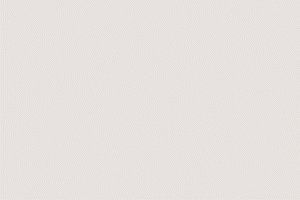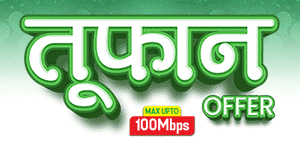Tharu Women and Girls Faces Challenges in Learning from the Older Generation
Tharu an indigenous group residing in the eastern region of Nepal, has a rich cultural heritage that spans centuries. With a distinct way of life, traditions, and unique knowledge systems, the Tharu people have successfully maintained their identity throughout generations. However, as modernization and globalization continue to impact their society, there is a growing concern about the preservation and transfer of their cultural knowledge to future generations. This article delves into the significance of intergenerational knowledge transfer among the East Nepal Tharu and explores the efforts being made to ensure the continuity of their cultural heritage.
Historically, the Tharu people have lived in the forests for hundreds of years, employing short fallow shifting cultivation and the seclusion of the Tharu people has resulted in forming a distinct culture that has slowed the adoption of new developments and resulted in slow economic progress.
A Case Study
The Tharu people are notable for conserving grains and rice and using natural resources to handle the impact of climate change on food storage, according to the firsthand narratives of Bhola Devi Chaudhary (74 years old) and Rajkumari (67 years old). These women revealed that Tharu women are skilled in building the traditional “bhakari” or “kothi way of storing grains.
The materials used to build the “kothi” include clay, manure, and fine straw. A thick paste made from this mixture is employed on the frame’s interior and exterior. Manure and rice husk are used when making pots to increase the clay’s strength further. Dung is a useful addition because it is known for its ability to deter pests.
Preserving dry vegetables is common in many regions, especially during the rainy season when fresh vegetables may be scarce. The Tharu community relies on this method to ensure a steady supply of vegetables and maintain hygienic food practices. Some of the vegetables mentioned, such as radish, cauliflower, and pumpkin seeds and fish can be dried and stored for an extended period without spoiling. This practice allows the Tharu people to have access to these vegetables even when they are not readily available in the local market or during unfavorable weather conditions, and they use mud pot.
Shoba Chaudhary, a resident of Surunga-2 in Saptari, mentions that she has acquired the skill of weaving various items such as baskets and mats using materials like sikki elephant grass, pater, and paper reeds from the wetland. Additionally, wheat straw and a specific type of weed plant found in paddy plantations are used for weaving baskets, mats, baskets, and pen holders.
These products, especially those made from the weed plant, are specifically produced for the Tharu community to be used during special occasions, marriages, and festivals. They are sold in the market for prices ranging from 500 to 2500 Nepalese Rupees, providing a good source of income. However, sikki material is not available throughout the year, so during such times, they craft baskets using wool, which has gained popularity and is sold for 500 Nepalese Rupees. Women from the Tharu tribes of Nepal’s southern plains have been weaving baskets from kans grass for years, and the skill has been passed down from one generation to the next. The young people have been learning how to weave baskets (which are called by different names, likewise Dhakiya, Dhammi, Majeula ) out of sikki, seen as pure, and kans, thought to be useless.
The Tharu Male in Gaushala Mahottari and Saptari is used to craft fishing traps known as “Jaa” This trap is constructed using nets with bamboo support in between. They also created another fishing tool called “Chah,” made of bamboo and jute rope. These purposefully designed tools are utilized for catching fish. Tharu women seldom engage in fishing, preferring to utilize their manual dexterity to search for Ghonghi, a type of delectable snail recognized for its nutritional value.
Furthermore, the Tharu people have also developed localized traditional knowledge, skills, and experiences with certain climatic pressures, which they use to lessen the impact on agriculture. The majority of the households provided evidence that increased surface temperatures and modifications in the pattern of precipitation are results of climate change. Low agricultural productivity is the outcome of climate dangers including floods, hailstorms, drought, windstorms, and many others that force farmers to change their farming practices. It is essential to advance their traditional knowledge by researching its scientific foundation.
Additionally, a lot of Tharu traditional agroforestry practices are linked to the cultural practices and have been passed intergenerationally. Hence, speaking to Bhola Devi Chaudhary ,Rajkumari and Shoba Chaudhary Saptari district and Basanti Devi Singh and Samjhana Chaudhary , they talked about the significance of the cultural practices of Tharu community which were traditionally also aligned to the communities attempt to align with the agroforestry cycle and mitigate the impacts of climate change.
Tharu’s do not traditionally possess pictures or statues of gods or goddesses. Instead, they gather mud from neighboring villages such as Kamalpur, Bastipur, Bishanpur, Shamastipur, and Haripur. They mix this mud and create lamps that are imbued with mantras. During worship, they envision a deity (gosai) and perform rituals. Additionally, they maintain two long bamboo poles adorned with flags, which are worshiped as symbols of Hanuman, believed to ward off evil from their homes, which shows they are very close to nature.
All these knowledges they pass to generation to generation since long decade how ever now a days in changing context, Tharu community’s traditional skill of making various tools from bamboo, mud and Sikki is now in danger due to the lack of raw materials , knowledge, and the availability of cheap plastic products in the markets and migration of younger generation for higher education.
Younger girls especially face difficulties to learn traditional tips and techniques from their mother and grandmother because most of them fascinate to new technology and trend and gender biases faced during knowledge transfer at home , community, and school.
Learning from the older generation is highly valued within the Tharu community. Tharu women play a vital role in passing on traditional knowledge and practices to their daughters. This intergenerational transfer of wisdom and skills not only helps preserve their cultural heritage but also empowers young Tharu girls, equipping them with practical abilities and a strong sense of identity. In the Tharu Older Language, unique words are used to describe colors, such as “Dhau Dhau Ujjar” meaning extremely white and “Kari Khot Khot” meaning extremely black. Additionally, the term “Pitiyan” is specifically used by parents to refer to their children’s aunts. However, the younger generation possesses limited knowledge of such words, preferring more refined and adapted language, which could potentially result in the loss of these expressions in the future.
However, the lack of institutional support and investment in Tharu education limits the potential for comprehensive learning experiences that bridge traditional wisdom and formal education.
Difficulties Faced by Younger Tharu Girls in Learning
Despite the value placed on education, younger Tharu girls encounter various obstacles in their learning journeys. Factors such as gender biases, socioeconomic disparities, and inadequate infrastructure present significant challenges. The persistence of traditional gender roles and societal expectations restricts girls’ access to education, perpetuating inequalities.
Additionally, limited resources and inadequate educational facilities further hinder their educational advancement. Overcoming these paradoxes necessitates concerted efforts from Local Government and society at large to dismantle barriers and create an inclusive and empowering educational environment for Tharu girls at home and community.
Even when the girls from Tharu communities cross the hurdles in the family and society and reach school, the challenge of learning continues. Tharu girls face significant challenges when trying to understand Nepali textbooks due to language barriers and the absence of education in their mother tongue.
The School can create an environment creating a platform were they can organized intergenerational dialogue between two generation were the Tharu girls or boys can learn indigenous knowledge of weaving basket of sikki, making bamboo items like wise dhakiya Suppa, rope as a Friday activities.
The absence of education in their mother tongue not only hampers their ability to grasp the curriculum effectively but also disconnects them from their cultural heritage and identity. Bridging this gap by providing education in Tharu language would not only enhance their learning experience but also promote inclusivity and preserve their linguistic and cultural heritage.
Despite the government of Nepal’s recognition of education in mother tongue, its implementation has faced challenges, including a lack of resources, trained teachers, and standardized materials in various languages. The lack of strong leadership and political apathy towards MoEST has added to the challenges.













Comments